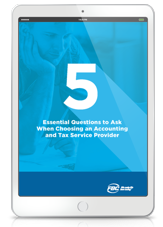Contents
- 1 1. Monitor your cash flow
- 2 2. Consider incorporating your business
- 3 3. Organize business expenses throughout the year
- 4 4. Take advantage of tax deductions
- 5 5. Keep all records & receipts for at least 6 years
- 6 6. Keep emergency funds
- 7 7. Always file a tax return
- 8 Five essential questions to ask your accounting or tax provider
- 9 About FBC
Last updated: Dec. 22, 2023
If you’re self-employed, you already know how stressful tax preparation and planning can be – keeping track of receipts, staying up-to-date on the Canada Revenue Agency’s policies, and ensuring you’re capturing all of your deductions and expenses.
Luckily, we have 7 tried-and-true tax tips that will help you stay on track throughout the year, maximize your deductions and lower your overall tax bill.
1. Monitor your cash flow
Take the time to monitor your cash flow on a daily or weekly basis. This will shine a light on where you’re getting the best return on your dollar.
If you break it down, you’ll realize a large portion of your business is coming from a very small portion of your clients. If you find a specific product is performing well, it could be an opportunity to streamline your portfolio or adjust your pricing.
Consistently reviewing your cash flow will also help you catch overdue payments from clients, see if your own bills are overdue and determine if a slow month is cause for concern or just a cyclical part of your business.
2. Consider incorporating your business
There are many benefits to incorporation. Because an incorporated business is a separate entity, you are not personally responsible for debts, obligations or other acts of the corporation (talk to your tax professional about exceptions). Corporations are also taxed at a lower rate. For Canadian-controlled private corporations claiming the Small Business Deduction, the net federal tax rate is 9%.
If the business is not incorporated, your income is taxed at the personal income tax level. For the 2022 tax year, personal income is taxed as follows:
- 15% on the first $50,197 of taxable income, plus
- 20.5% on the next $50,195 of taxable income (on the portion of taxable income over $50,197 up to $100,392), plus
- 26% on the next $55,233 of taxable income (on the portion of taxable income over $100,392 up to $155,625), plus
- 29% on the next $66,083 of taxable income (on the portion of taxable income over $155,625 up to $221,708), plus
- 33% of taxable income over $221,708
If you’re earning more than you need to live, you can reinvest surplus profit into the business, allowing you to defer personal taxes on withdrawals.
In addition, the business has extended life, there are opportunities for income splitting, along with more opportunities to raise capital.
You can also use the lifetime capital gains exemption if you have capital gains arising from the disposition of certain properties (small business corporation shares and qualified farm and fishing properties) and meet certain conditions – the exemption could spare you from paying taxes on some or all of it.
Learn more with our “Ultimate Guide to Incorporated Small Business in Canada” [free download]
3. Organize business expenses throughout the year
Sit down for 30 minutes every month to review and categorize your receipts. This keeps things manageable as the year progresses and keeps you on top of your spending, so you don’t miss out on any tax deductions.
We advise our small business Members to purchase an accordion folder every year to house all business receipts. These inexpensive folders are easy to obtain and allow you to organize your receipts by category and year, so finding a specific receipt is a snap in the future.
Read more on our blog “7 simple ways to organize your receipts”
4. Take advantage of tax deductions
There are many business expenses you can claim as a tax deduction, helping reduce the amount of taxes you must pay and keeping more money in your pocket.
Below is a partial list of some of the expenses your small business can deduct:
- Home office expenses
- Advertising and promotional material
- Insurance premiums
- Mortgage interest
- Repairs and maintenance
- Interest on loans
- Property taxes
- Capital Cost Allowance (CCA)
- Meals and entertainment (up to 50%)
- Salaries, wages, benefits, and medical expenses
- Vehicle expenses and fuel costs
- Accounting and legal fees
- Gifts to employees for holidays or special occasions (be aware of limits and how to report these as taxable benefits to your employees when applicable)
5. Keep all records & receipts for at least 6 years
To keep the CRA happy, you need to keep records and copies of all your invoices.
Even though you don’t need to send your receipts to the CRA when you file your taxes, if they ask for proof of a deduction and you can’t provide it, they will reject the claim.
That’s why it’s important to have a separate bank account for your business and use a separate credit card.
In addition to keeping track of all your receipts, you need to keep that paperwork for at least six years. Why? That’s how far back the CRA can go if it decides to audit you.
6. Keep emergency funds
Being self-employed means getting used to inconsistent or unreliable cash flow.
Because income can vary from month-to-month, it’s a good idea to set aside enough money to carry you through the dry periods. This can help pay for expenses and taxes, which are not automatically deducted.
Set up an emergency fund so you can cover your personal expenses when you’re not bringing home income.
Read more on our blog “5 cash flow mistakes small business owners make“
7. Always file a tax return
If you’re self-employed and haven’t made any income, you might think there’s no reason to file a tax return.
But if you want to claim the GST, HST credit or Canada Child Benefit, the net income declared on your tax return determines the amount you receive.
Filing a return will also allow you to claim:
- Provincial tax benefits
- Tax refunds for instalment or source deductions
- Refundable medical expense supplement
- Canada Pension Plan or Employment Insurance (EI) premium overpayments
Also, your tax return creates the contribution room in your RRSP. Make sure you file so you receive the credits and benefits you’re entitled to.
Read more about RRSPs in our blog: Should I use an RRSP or TFSA as a business owner?
If you’re a sole proprietor either by running a business or through self-employment, your income is viewed as personal income and must be included on your personal income tax return. Use CRA Form T2125 “Statement of Business or Professional Activities” to report your business/self-employment income and expenses and submit it with your completed T1 income tax package.
Five essential questions to ask your accounting or tax provider
Most business owners don’t have the time or the technical knowledge to handle all their own administrative tasks. They’re also afraid of making a mistake, only to have the CRA to come calling.
Sound familiar?
You have enough on your plate just keeping up with the day-to-day of your business. That’s why you either hired an accounting or tax provider, or are thinking of hiring one.
Download your copy of “5 Essential Questions to Ask When Choosing an Accounting and Tax Service Provider” to know how to find the right person to help you succeed.
About FBC
With more than 70 years of Canadian tax experience, we offer unlimited tax preparation help, support and tax advice for Canadian business owners. For one flat fee. Our tax experts will run the numbers to create a custom tax return that helps minimize headaches and maximize your tax savings.
Leave your unique tax situation to us. We’ll get you every dollar you deserve. Book online or call us at 1-800-265-1002.





